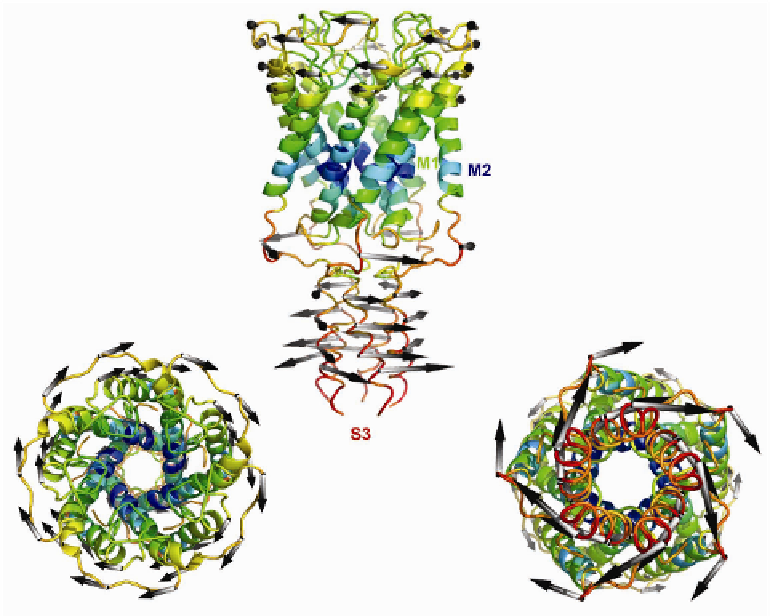Information Technology Reference
In-Depth Information
conformational change. Interestingly, in this protein as well, the twisting and
tilting motions result in widening up of the channel pore.
Although more than 25% of the human genome is made up of membrane
proteins (Bond
et al.
, 2007), only ~100 X-ray structures of membrane proteins
are known to date (White, 2004). Moreover, most of these structures are from
prokaryotic organisms. Thus insights on mechanics of biological functions of
these proteins that are made from these structures are vital in understanding the
functioning of the respective human homologues. In particular, the 'twist-to-
open' mechanism instrumental in the gating function of most of the membrane
proteins discussed here, suggests a common mechanism of pore-opening when
the
pore
architecture
exhibits
a
cylindrical
symmetry
with
funnel-like
organization of a bundle of helices.
Fig. 7.6.
Twisting and torsion MscL in the slow-frequency twisting/torsion mode.
The top panel
illustrates the side view with the protein with a vector representation of the amplitude and direction
of motion predicted by the ANM (see also Valadie
et al.
, 2003). The lengths of the arrows scale
with the amplitude of the motion. The bottom panel shows the motion of the protein as viewed
from top (left) and bottom (right).

